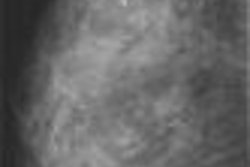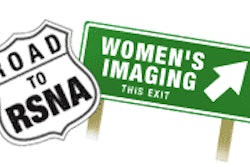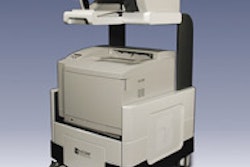It's no surprise that breast biopsy and other interventional procedures are associated with high costs. But screening mammography alone carries a fairly significant price tag, according to a study in the latest Radiology.
Dr. Steven Poplack and colleagues analyzed nearly 100,000 records from the New Hampshire Mammography Network (NHMN), and found that "the costs associated with standard screening outweighed the 'induced costs' of diagnostic imaging, clinical evaluation, and interventional procedures that result from screening." However, interventional procedures still consumed a healthy portion of the financial resources related to breast cancer screening, they wrote (Radiology, January 2005, Vol. 234:1, pp. 79-85).
Poplack is from the department of radiology at Dartmouth-Hitchcock Medical Center in Lebanon, NH. His co-authors are from the department of medicine, as well as the department of community and family medicine.
For this study, the total and component costs of imaging, consultation, and biopsy were estimated according to the 2002 Medicare reimbursement rates. The majority of 99,064 women enrolled were older than 40 and postmenopausal, had no family history of breast cancer, and were covered by health insurance. Ninety-eighty percent of the women were Caucasian.
The majority of the group (87%) only underwent screening mammography. Of the 13% who also had diagnostic mammography, most underwent imaging immediately or soon after the initial exam. A total of 2,942 women had interventional procedures that resulted in a diagnosis of benign or malignant disease. Twenty-four percent had invasive breast cancer of ductal carcinoma in-situ. Excisional biopsy was the most commonly performed procedure.
The authors calculated that of the $12.3 million spent through NHMN program, about 80% was incurred by imaging alone. Screening mammography by itself made up 68% of the $12.3 million. Additional views took up 39%. Finally, while only 3% of the women underwent some kind of interventional procedure, 20% of the financial resources went to them.
"The mean total cost per woman was $124, of which $99 was attributable to imaging, and $25 to consultation and/or intervention," the authors stated. Given that such a small number of women actually underwent breast biopsy, "a disproportionate sum is spent on breast biopsy especially wire-localized excision."
One possible reason for this spending could be higher recall rates. A study in the Journal of the American Medical Association compared recall rates in the U.S. to those in the U.K., and reported that American women are twice as likely to be recalled for further testing after screening mammography, and to undergo open surgical biopsy with negative results. The fear of malpractice litigation is an issue that may contribute to more biopsies and higher costs (JAMA, October 22, 2003, Vol. 290:16, pp. 2129-2137).
In an e-mail to AuntMinnie.com, Poplack declined to comment on how the results of this study could impact malpractice issues or the ongoing debate over the value of screening mammography. However, his group concluded that "the financial effect of screening on treatment, including likely cost savings associated with finding breast cancer at an earlier stage, is important."
At the time of the study, the NHMN did not distinguish film-screen mammography from other modalities, such as breast MR or scintimammography, nor did it consider computer-aided detection (CAD). Study co-author and NHMN principal investigator Patricia Carney, Ph.D., said plans are under way to investigate these modalities, but that the information may not be as complete.
"Because these newer technologies have not yet been widely disseminated into the community, we do not have enough data to conduct the analysis we initially did," Carney explained.
By Shalmali Pal
AuntMinnie.com staff writer
January 19, 2005
Related Reading
Mammo-screened tumors require less toxic treatment, December 29, 2004
Medicare announces payment rates and policy changes, November 3, 2004
Lack of screening accounts for most late-stage breast cancers in U.S., October 20, 2004
Diligent coding means money in the bank for breast imaging, May 21, 2004
American recall rates following mammography higher than in England, October 22, 2003
Copyright © 2005 AuntMinnie.com



















